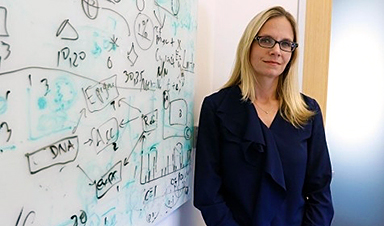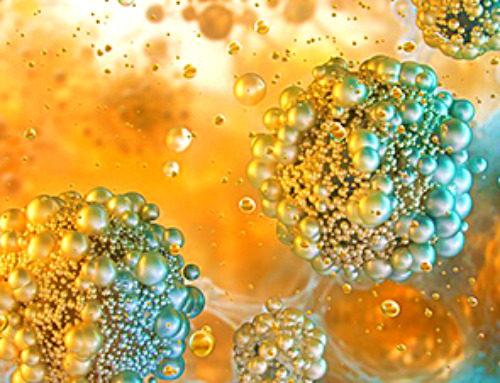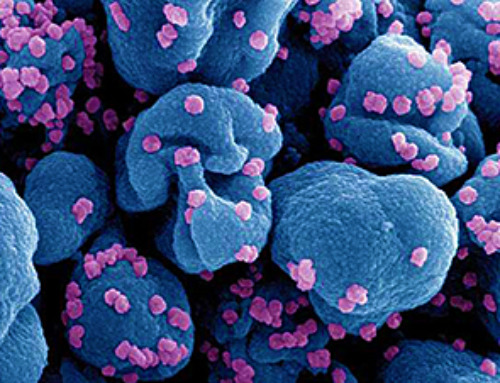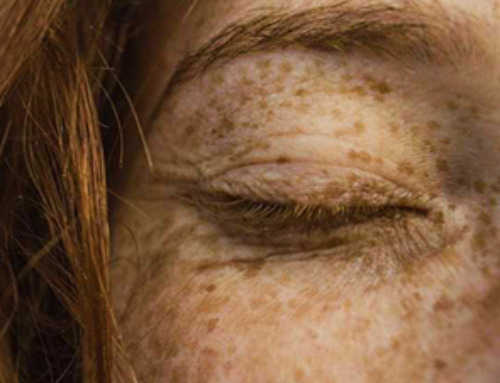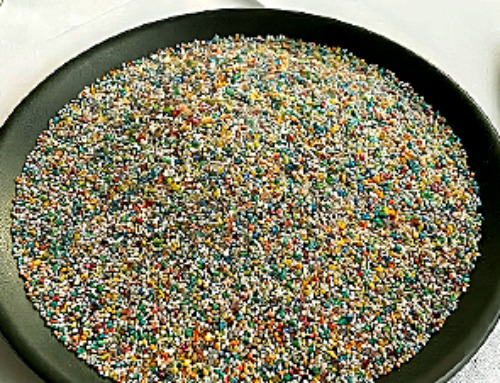Researchers from Stanford Medicine have discovered that cancer cells-to-be accumulate a series of specific genetic changes in a predictable and sequential way years before they are identifiable as pre-malignancies. Many of these changes affect pathways that control cell division, structure, and internal messaging — leaving the cells poised to go bad long before any visible signs or symptoms occur.
The study is the first to exhaustively observe the natural evolution of the earliest stages of human cancers, starting with cells that have a single cancer-priming mutation and culminating with a panel of descendants harboring a galaxy of genetic abnormalities.
Identifying the first steps associated with future cancer development could not only facilitate earlier-than-ever diagnosis — when a deadly outcome is but a twinkle in a rogue cell's eye — but may also highlight novel interventions that could stop the disease in its tracks, the researchers say.
Curtis is the senior author of the research, which was published on May 31 in Nature. The lead authors of the study are former postdoctoral scholar Kasper Karlsson, Ph.D., and visiting graduate student Moritz Przybilla.
Cells of nefarious beginnings
The research builds on previous work in Curtis's laboratory indicating that some colon cancer cells are seemingly born to be bad — they acquire the ability to metastasize long before the disease is detectable.
"Our studies of established tumors showed us that early genomic alterations seem to dictate what happens later, and that many of these changes seem to happen before tumor formation," Curtis said. "We wanted to know what happens at the very earliest stages. How does a cancer cell evolve, and is this evolutionary path repeatable? If we start with a given set of conditions, will we get the same result in every case?"
The researchers studied tiny, three-dimensional clumps of human stomach cells called gastric organoids. The cells were obtained from patients undergoing gastric bypass surgery to treat obesity. At the beginning of the study, the researchers nudged the cells toward cancers by disabling the production of a key cancer-associated protein called p53 that regulates when and how often a cell divides. Mutations in p53 are known to be an early event in many human cancers, and they trigger the accumulation of additional genetic changes including mutations and copy number alterations — in which repetitive regions of the genome are lost or gained during cell division.
Then they waited.
Every two weeks, for two years, Karlsson cataloged the genetic changes occurring in the dividing cells. When Karlsson and Przybilla analyzed the data they found that, although changes occurred randomly, those that conferred greater fitness gave their host cells an evolutionary advantage over other cells in the organoid. As the cells continued to divide and the cycle of mutation and competition repeated over many iterations, the researchers saw some common themes.
Predictable pathways
"There are reproducible patterns," Curtis said. "Certain regions of the genome are consistently lost very early after the initial inactivation of p53. This was repeatedly seen in cells from independent experiments with the same donor and across donors. This indicates that these changes are cell-intrinsic, that they are hardwired into tumor evolution. At the same time, these cells and organoids appear mostly normal under the microscope. They have not yet progressed to a cancer."
The researchers found that these early changes usually occur in biological pathways that control when and how often a cell divides, that interfere with a cell's intricate internal signaling network coordinating the thousands of steps necessary to keep it running smoothly, or that control cell structure and polarity — its ability to know what is "up" and "down" and to situate itself with respect to neighboring cells to form a functioning tissue.
The researchers saw similar patterns occur again and again in cells from different donors. Like water flowing downhill into dry creek beds, the cells traced tried-and-true paths, gaining momentum with each new genetic change. Several of these changes mirror mutations previously observed in stomach cancer and in Barrett's esophagus, a pre-cancerous condition arising from cells that line the colon and stomach.
"These changes occur in a stereotyped manner that suggests constraints in the system," Curtis said. "There's a degree of predictability at the genomic level and even more so at the transcriptomic level — in the biological pathways that are affected — that gives insights into how these cancers arise."
Curtis and her colleagues plan to repeat the study in different cell types and initiate events other than p53 mutation.
"We're trying to understand exactly what malignant transformation is," Curtis said. "What does it mean to catch these cells in the act, about to topple over the edge? We'd like to repeat this study with other tissue types and initiating mutations so we can understand the early genetic events that occur in different organs. And we'd like to study the interplay between the host and the environment. Do inflammatory factors play a role in promoting progression? We know that it matters that the cells in these organoids are communicating with each other, and that is important to understanding progression and treatment response."
Reference: "Deterministic evolution and stringent selection during preneoplasia" by Kasper Karlsson, Moritz J. Przybilla, Eran Kotler, Aziz Khan, Hang Xu, Kremena Karagyozova, Alexandra Sockell, Wing H. Wong, Katherine Liu, Amanda Mah, Yuan-Hung Lo, Bingxin Lu, Kathleen E. Houlahan, Zhicheng Ma, Carlos J. Suarez, Chris P. Barnes, Calvin J. Kuo and Christina Curtis, 31 May 2023, Nature.
DOI: 10.1038/s41586-023-06102-8
Researchers from Karolinska Institutet, the University College London, and the Chan Zuckerberg Biohub also contributed to the study.
The research was supported by the National Institutes of Health (grants DP1-CA238296 and U01-CA217851) and the Swedish Research Council.
News
Platelet-inspired nanoparticles could improve treatment of inflammatory diseases
Scientists have developed platelet-inspired nanoparticles that deliver anti-inflammatory drugs directly to brain-computer interface implants, doubling their effectiveness. Scientists have found a way to improve the performance of brain-computer interface (BCI) electrodes by delivering anti-inflammatory drugs directly [...]
After 150 years, a new chapter in cancer therapy is finally beginning
For decades, researchers have been looking for ways to destroy cancer cells in a targeted manner without further weakening the body. But for many patients whose immune system is severely impaired by chemotherapy or radiation, [...]
Older chemical libraries show promise for fighting resistant strains of COVID-19 virus
SARS‑CoV‑2, the virus that causes COVID-19, continues to mutate, with some newer strains becoming less responsive to current antiviral treatments like Paxlovid. Now, University of California San Diego scientists and an international team of [...]
Lower doses of immunotherapy for skin cancer give better results, study suggests
According to a new study, lower doses of approved immunotherapy for malignant melanoma can give better results against tumors, while reducing side effects. This is reported by researchers at Karolinska Institutet in the Journal of the National [...]
Researchers highlight five pathways through which microplastics can harm the brain
Microplastics could be fueling neurodegenerative diseases like Alzheimer's and Parkinson's, with a new study highlighting five ways microplastics can trigger inflammation and damage in the brain. More than 57 million people live with dementia, [...]
Tiny Metal Nanodots Obliterate Cancer Cells While Largely Sparing Healthy Tissue
Scientists have developed tiny metal-oxide particles that push cancer cells past their stress limits while sparing healthy tissue. An international team led by RMIT University has developed tiny particles called nanodots, crafted from a metallic compound, [...]
Gold Nanoclusters Could Supercharge Quantum Computers
Researchers found that gold “super atoms” can behave like the atoms in top-tier quantum systems—only far easier to scale. These tiny clusters can be customized at the molecular level, offering a powerful, tunable foundation [...]
A single shot of HPV vaccine may be enough to fight cervical cancer, study finds
WASHINGTON -- A single HPV vaccination appears just as effective as two doses at preventing the viral infection that causes cervical cancer, researchers reported Wednesday. HPV, or human papillomavirus, is very common and spread [...]
New technique overcomes technological barrier in 3D brain imaging
Scientists at the Swiss Light Source SLS have succeeded in mapping a piece of brain tissue in 3D at unprecedented resolution using X-rays, non-destructively. The breakthrough overcomes a long-standing technological barrier that had limited [...]
Scientists Uncover Hidden Blood Pattern in Long COVID
Researchers found persistent microclot and NET structures in Long COVID blood that may explain long-lasting symptoms. Researchers examining Long COVID have identified a structural connection between circulating microclots and neutrophil extracellular traps (NETs). The [...]
This Cellular Trick Helps Cancer Spread, but Could Also Stop It
Groups of normal cbiells can sense far into their surroundings, helping explain cancer cell migration. Understanding this ability could lead to new ways to limit tumor spread. The tale of the princess and the [...]
New mRNA therapy targets drug-resistant pneumonia
Bacteria that multiply on surfaces are a major headache in health care when they gain a foothold on, for example, implants or in catheters. Researchers at Chalmers University of Technology in Sweden have found [...]
Current Heart Health Guidelines Are Failing To Catch a Deadly Genetic Killer
New research reveals that standard screening misses most people with a common inherited cholesterol disorder. A Mayo Clinic study reports that current genetic screening guidelines overlook most people who have familial hypercholesterolemia, an inherited disorder that [...]
Scientists Identify the Evolutionary “Purpose” of Consciousness
Summary: Researchers at Ruhr University Bochum explore why consciousness evolved and why different species developed it in distinct ways. By comparing humans with birds, they show that complex awareness may arise through different neural architectures yet [...]
Novel mRNA therapy curbs antibiotic-resistant infections in preclinical lung models
Researchers at the Icahn School of Medicine at Mount Sinai and collaborators have reported early success with a novel mRNA-based therapy designed to combat antibiotic-resistant bacteria. The findings, published in Nature Biotechnology, show that in [...]
New skin-permeable polymer delivers insulin without needles
A breakthrough zwitterionic polymer slips through the skin’s toughest barriers, carrying insulin deep into tissue and normalizing blood sugar, offering patients a painless alternative to daily injections. A recent study published in the journal Nature examines [...]
